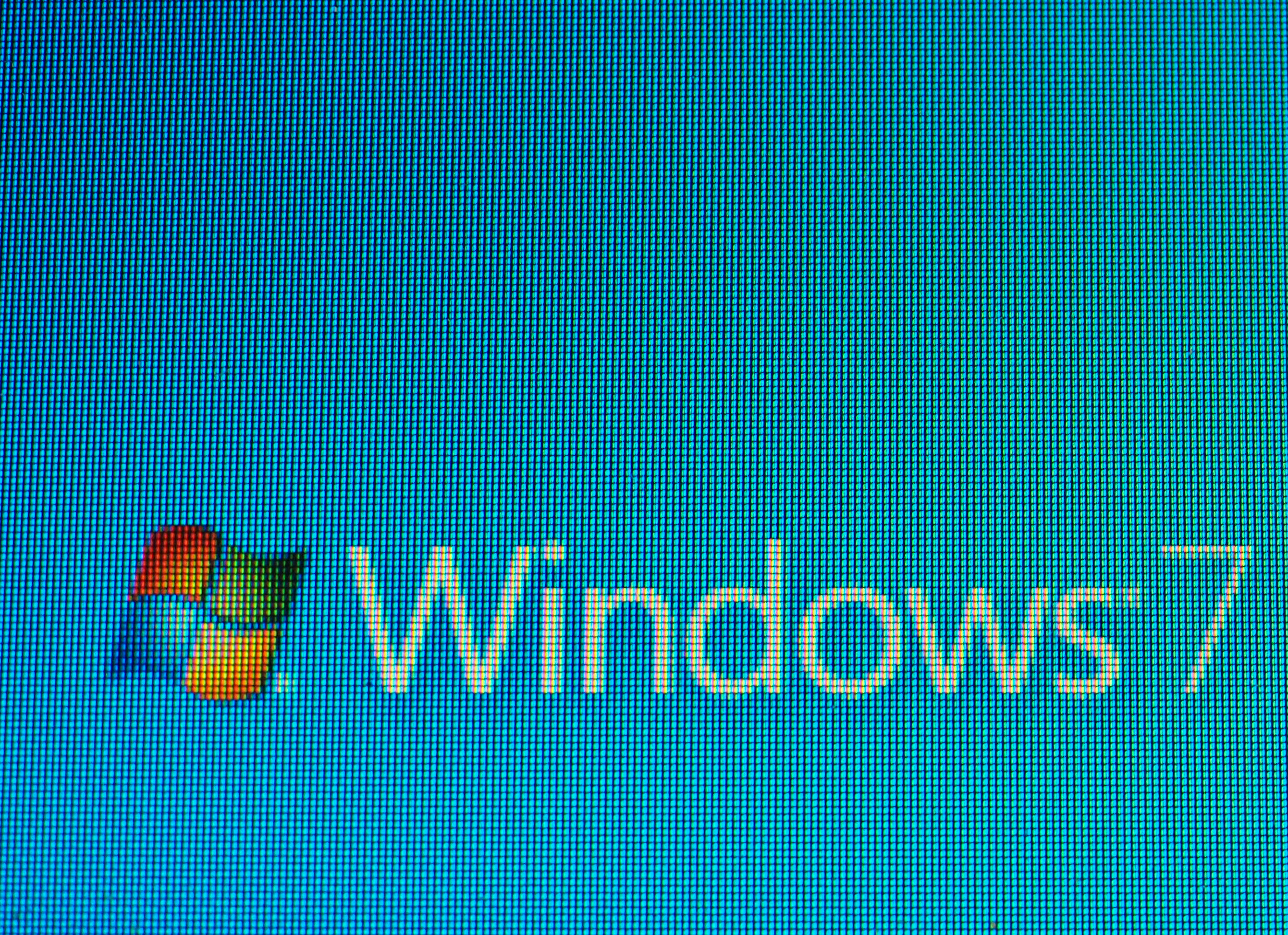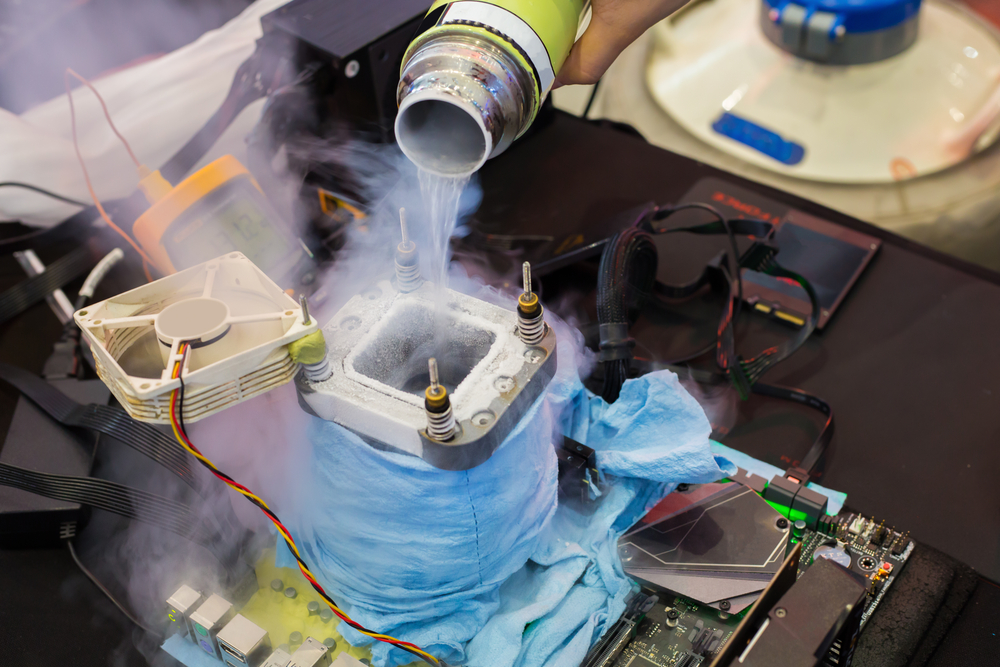Windows 7 Is Dead. But not for Professional Overclockers
Professional overclockers say they'll keep benchmarking with Windows 7 even though it reached end-of-life this week.

One man’s trash is another man’s treasure, and while many are throwing out Windows 7 since it reached end-of-life (EoL) this week, there’s at least one group of tech enthusiasts who plan to continue using the outdated operating system. Professional overclockers don't care that Microsoft will no longer issue security updates or patches for the OS it debuted in 2009. Instead, they prefer Window 7's lighter footprint, which allows for speedier benchmark results.
“We care more about performance than security,” professional overclocker Joe Stepongzi, also known for Bearded Hardware, explained to Tom’s Hardware. “It’s all about bleeding-edge performance. Windows 10 is quite large and excessive compared to Windows 7, so I see Windows 7 [still] being used to gain some points in some benches.”
Allen “Splave” Golibersuch also uses the OS for competing because it's a “low-resource platform."
“It is highly tweaker-friendly, and its longevity has led to many smart people cracking the bits that help it be so speedy. There’s no bloat built in, like Cortana et cetera,” he told Tom’s Hardware. “Nothing is more frustrating than when you are chasing a world record on liquid nitrogen cooling, and Windows 10 starts doing an automatic update -- even when there is no Internet connection!”

The general perception is that legacy benchmarks run better on the platform for which they were originally designed. In fact, some of the benchmarks overclockers use to compete, such as the PCMark Vantage and PCMark 05 PC benchmarks, won’t run properly on Microsoft’s latest OS.
“PCMark Vantage requires debugging to get working, and PCMark 05 doesn't run on Windows 10 at all,” pro overclocker Charles Fugger told Tom’s Hardware.
Splave also plans to keep using Windows 7 for certain benchmarks and certain platforms.
Get Tom's Hardware's best news and in-depth reviews, straight to your inbox.
“Current-generation AMD, for instance, does not have very good support for even Windows 8, let alone Windows 7. Ryzen Master [overclocking software] will not even install. Intel X299 Windows 7 is definitely my go-to OS for performance,” Splave said.
Stepongzi will also continue leveraging Windows 7, which he described as being “great for performance” ever since its release. However, he does suspect that eventually newer PC platforms will lose the ability to support Windows as new drivers come with newer hardware releases.
Of course, these tech extremists know all about Windows 10. In fact, all three of these pro overclockers have Windows 10 on their personal computers. But for competitive overclocking, Windows 7 offers less bloatware and overhead than its younger sibling, and 32-bit benchmark applications favor older OSes, as Fugger put it.
It’s even commonplace for overclockers to use Windows XP, which came out in 2001 and hit EoL in 2014, for benchmarks, including wPrime, a multi-threaded benchmark for x86 CPUs, and SuperPi -32M, for testing speed and stability.
“An example of that is ... SuperPi XS, where we can see the performance reduction on every OS, including Windows 8 and Windows Vista,” Fugger said. “Windows XP is the best OS for SuperPi, and overclockers will go to great lengths (very far beyond normal) to install Windows XP on modern hardware. I am understating the ‘great lengths,’ -- this is a trade secret to some people.”
So if you’re mourning Windows 7, perhaps you can take some solace in knowing that there are some overclockers out there who will be using it for a long time to come.

Scharon Harding has over a decade of experience reporting on technology with a special affinity for gaming peripherals (especially monitors), laptops, and virtual reality. Previously, she covered business technology, including hardware, software, cyber security, cloud, and other IT happenings, at Channelnomics, with bylines at CRN UK.
-
gdmaclew Very interesting.Reply
I know the article made reference to "great lengths" to which the overclocker would go to install older OS's and that they consider it almost a trade secret.
This must include the methods by which they are able to "fudge" the older drivers to work on the newest hardware. I would love to know just how they do that.
If I knew I would gladly keep my Windows 7 forever. -
artk2219 Replygdmaclew said:Very interesting.
I know the article made reference to "great lengths" to which the overclocker would go to install older OS's and that they consider it almost a trade secret.
This must include the methods by which they are able to "fudge" the older drivers to work on the newest hardware. I would love to know just how they do that.
If I knew I would gladly keep my Windows 7 forever.
You can just do a manual install of the driver. You need to find an .inf thats close enough then just do a manual driver install through device manager (you can use most windows 8 and some windows 10 drivers in windows 7). Normally if it fails the device will just stop working and you can go into safe mode and remove the driver. -
Darkbreeze Replyartk2219 said:you can use most windows 8 and some windows 10 drivers in windows 7
MOST hardware from the last two years or so don't HAVE Windows 7 or 8/8.1 drivers. Going forward, there will be practically zero hardware manufacturers offering drivers for these obsolete operating systems because Windows 7 is now EOL and Windows 8.1 has a MUCH smaller user footprint than Windows 7 did. Most users who WERE on Windows 8 have already migrated to Windows 10. Hardware manufacturers don't want to have to develop drivers for multiple platforms any more than what they absolutely have to, because that costs money and resources in man hours, so if they don't have to, they won't.
As of yet, I have RARELY seen a Windows 10 driver that was manufacturer specific, versus a "generic" Microsoft supplied driver that allows for only basic functionality rather than full featured usage, that worked in Windows 7.
I think if we revisit this article in a year we will find that much as when the world moved on from Windows XP, Windows 7 will have been left to the pages of history. I know a few fairly astute high end enthusiasts and overclockers and to the best of my knowledge, they are ALL using barebones or fully fleshed out versions of Windows 10 for everything now because they realize that testing on Windows 7 is not realistic when it will not be in use by the majority of people. Anything done on Windows 7 is no longer realistic because that is not what most people are or will be using going forward. -
AnAmateur In the article, "professional overclocker" Joe Stepongzi says : “Nothing is more frustrating than when you are chasing a world record on liquid nitrogen cooling, and Windows 10 starts doing an automatic update -- even when there is no Internet connection!” I am just a home user but even I know how to disable automatic updates in Windows 10, it is an option in Windows 10 Pro, and only required a few minutes work and tweaking in Windows 10 Home.Reply -
USAFRet And "chasing a world record on liquid nitrogen cooling" has exactly zero to do with normal users and what OS they use.Reply
That is like NHRA crew chiefs tweaking the specific nitromethane formula for a sub 6 second burst, and comparing that to the gas you and I buy at the pump.
If he's chasing a record, why is that system connected to the outside world and worrying about forced updates. -
Darkbreeze Yes, any "professional overclocker" that isn't smart enough to have disabled the automatic update feature one way or another, is probably not somebody that OUGHT to be a professional overclocker. But then again, we have plenty of people running companies and businesses that are absolutely clueless so in truth it's not a very surprising relevation.Reply -
Bamda Of course, these tech extremists know all about Windows 10. In fact, all three of these pro overclockers have Windows 10 on their personal computers.Reply
As do I.
